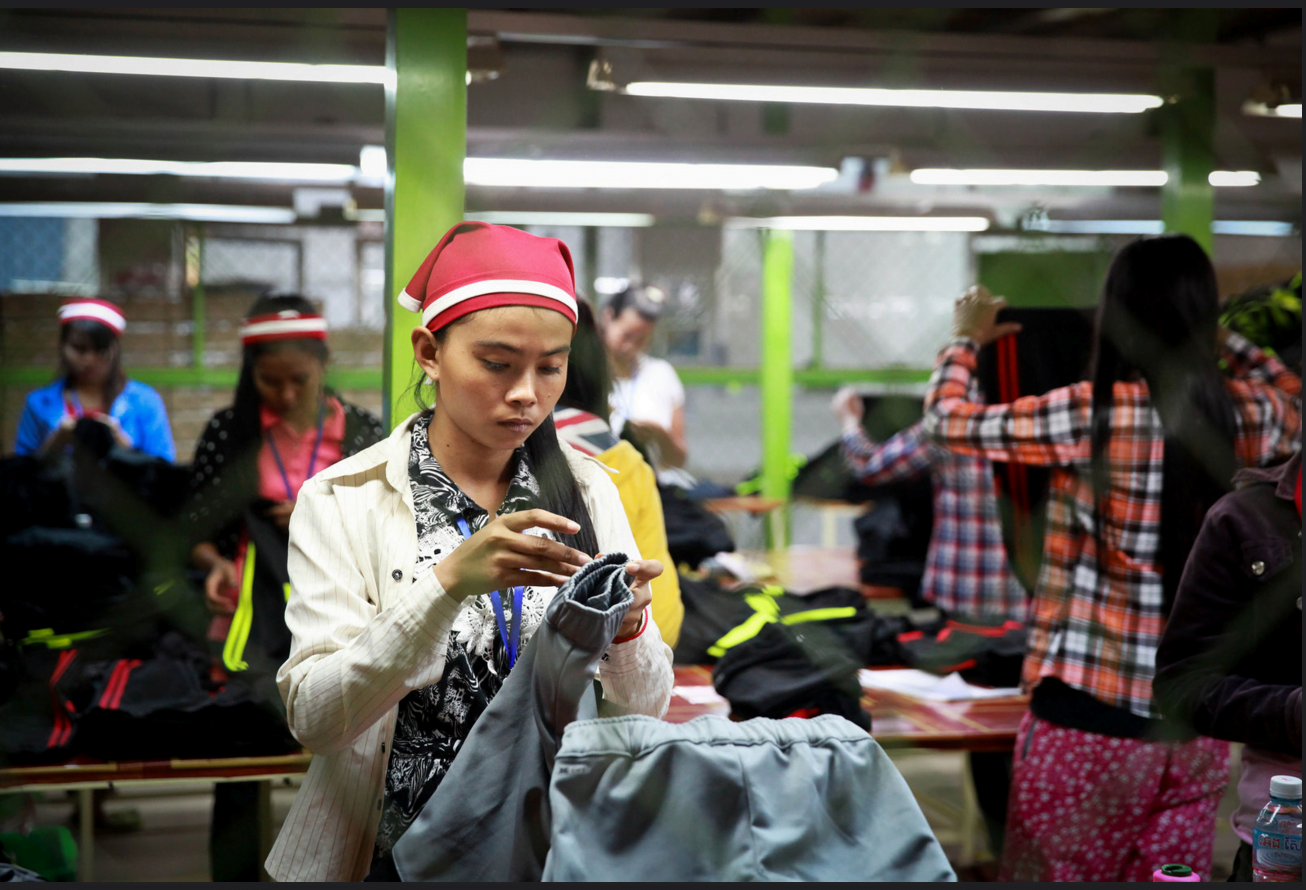Earlier this month, an appeals court upheld the convictions of 13 Cambodians charged with violence and causing property damage during a 2014 garment worker riot in which military police shot dead five workers and injured at least 40 others. Just days earlier, according to local reports, guards and thugs at a Cambodian garment factory attacked workers with steel pipes and meat cleavers while they prepared to attend a protest in an ongoing union dispute.
In Cambodia, the rifts between factory bosses and workers are long and deep. Protests are common, and so is violence.
Shortly after the 2014 riots, I wandered the streets outside a string of Phnom Penh factories where workers ate their lunches. The tension of the preceding months was still palpable. I interviewed several women who told me about their lives, coming from the countryside with hopes of saving money to send back to parents and kids. But after they paid rent, electricity, water and medical bills, there wasn’t much money left to send home. There was almost nothing left for their own food. So they skipped meals or ate on the cheap. They went to work weak, exhausted, and frequently sick from dusty, polluted air. They wanted overtime pay and better conditions, but they were scared of the authorities with guns. Their own government had proved it was willing to shoot them.
This month’s news comes just as I happen to be reading a report by Better Work, a joint program by International Labor Organization (ILO) and International Finance Corporation (IFC), which cites evidence that garment workers perform better when they are treated better and work in better conditions. They work better when they feel better—when they have greater freedoms, more security, better pay, and less stress on body and mind.
Ever since the Rana Plaza factory collapsed in Bangladesh in 2013, killing more than 1,100, consumers have come to understand a bit better the garment workers’ plight. The world quickly learned about workplace dangers that threaten the people who make our clothes. It wasn’t a new story, but millions learned the news for the first time. Suddenly, there were widespread calls for factory improvements in an industry long plagued by disaster.
But of course, it costs money to make better factories with better conditions. And it costs money to treat workers with dignity. The concern is always: Who pays? Nobody wants to pay more money when it’s seen as a cost. But time and again research shows: investing in worker welfare and safety spurs productivity—and profits. The cost is actually a benefit. It seems the price of better work “means better business.”
The ILO/IFC report cites a study of 185 factories and 5,100 workers in Vietnam who showed a 5.9 percent increase in profitability “when workers perceived improvements in their conditions,” including safety and pay. Those workers reached daily production targets 40 minutes faster than employees in other conditions. Basically, when workers feel better, they work better.
“As an economic matter, employers are largely indifferent as to how their labor costs are balanced – that is, whether the compensation consists of wages, the administration of safety standards, health care benefits, or vacation time,” writes Benjamin Powell, author of Out of Poverty: Sweatshops in the Global Economy. “A cost is a cost.” But those costs make a huge difference to employees. “When workers are poor, they want most of their compensation paid in wages, because they are trying to feed, clothe, and shelter themselves and their families,” Powell writes.


©Piotr Zaporowski
Overwhelmingly, workers want job changes that directly benefit them. They want tangible effects in their lives. Time and again, this is what I hear from Cambodian garment workers who have long fought for higher wages, overtime pay, vacation time, sick leave and—in essence—an easier, less stressful life.
When workers’ lives improve—through better pay, better benefits, better treatment—so does productivity. When productivity improves, so does profitability. And when companies profit, they can (and should) invest further in safety and worker wellbeing.
“It’s like they have a second breath of air,” Kevin Plenty, Cambodia country manager of Quantum Clothing, told me a couple of years ago when his factory became one of the country’s first to offer employees free lunch every day. “We saw the physical change in people.” He said it cost roughly 50 cents per worker, per meal—but the overall gains were much higher in terms of employee satisfaction, productivity and their attitude toward work.
No one profits when workers fear guns, cleavers and angry thugs on the job. There is no money saved, no production gained. Only loss—for everyone.
